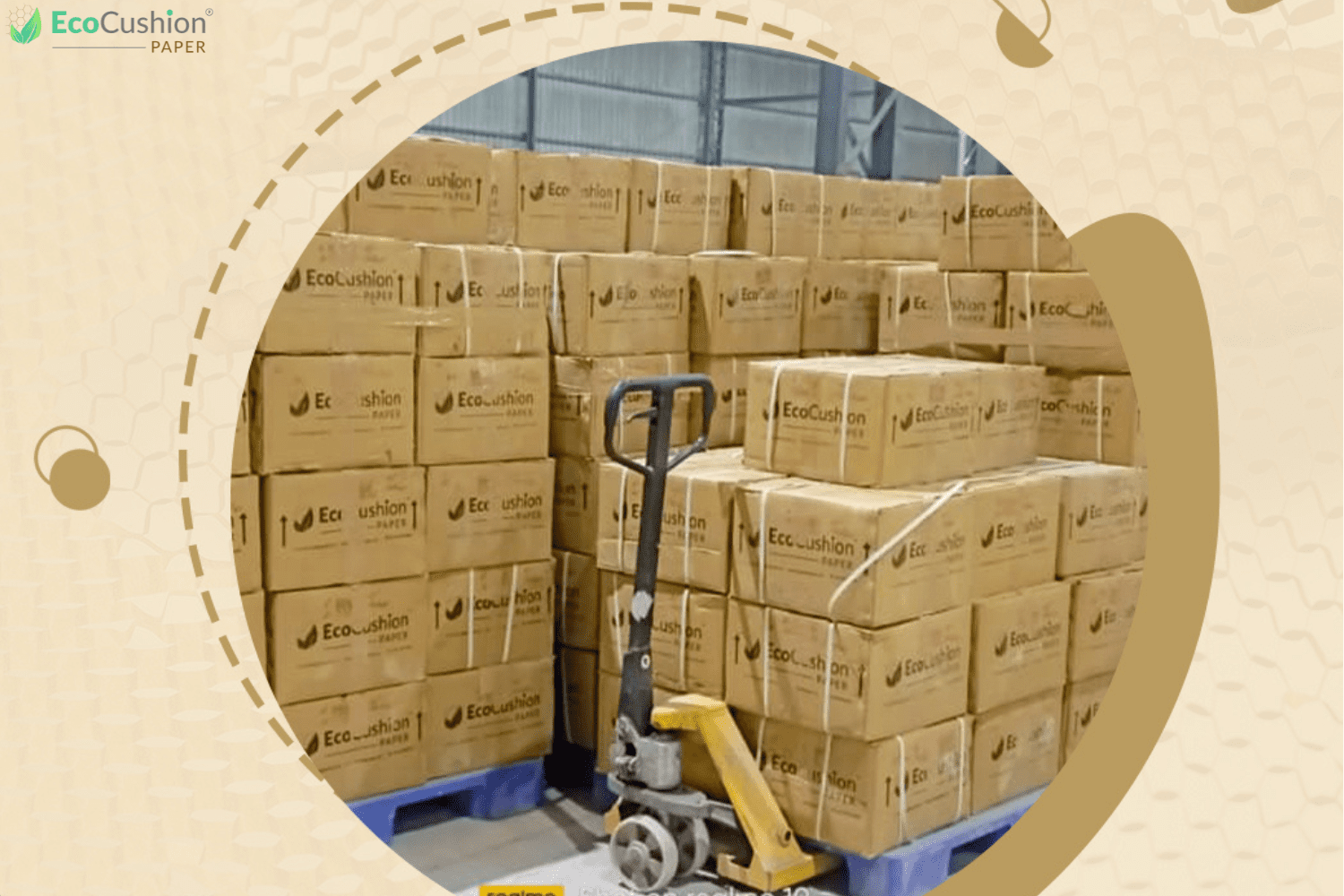No products in the cart.: ₹0.00
Best Eco-Friendly E-Commerce Packaging Ideas for your business: Greening the Supply Chain

In the ever-evolving landscape of e-commerce, the imperative to adopt sustainable practices has become more critical than ever. As consumers become increasingly environmentally conscious, businesses are challenged to reevaluate their strategies regarding the green supply chain, with a specific focus on eco-friendly shipping materials. This blog explores some of the best eco-friendly e-commerce packaging ideas for 2024, emphasizing the importance of reducing environmental impact throughout the entire product lifecycle.
Sustainable E-Commerce Shipping Packaging Ideas 2024
Recyclable Materials:

At the core of eco-friendly e-commerce packaging, a pivotal strategy entails incorporating recyclable materials such as cardboard, paper, and, notably, Eco Cushion’s honeycomb paper. This fundamental shift emphasizes the dedication of businesses to prioritize materials that seamlessly integrate into established recycling programs. The inclusion of honeycomb paper enhances this commitment, offering an innovative and sustainable alternative that complements traditional recyclables. By choosing materials widely accepted in recycling facilities, companies not only diminish the environmental impact of packaging waste but also actively contribute to the establishment and fortification of a circular economy. This symbiotic approach, which extends the life cycle of materials, not only reduces the carbon footprint but also promotes a more responsible, regenerative, and green supply chain, aligning with the evolving ethos of sustainable business practices.
Read here – environment impact of honeycomb paper
Biodegradable Packaging:

Embracing biodegradable materials, such as compostable plastics and mushroom-based packaging, marks a significant leap toward mitigating the enduring effects of packaging waste. This innovative approach not only addresses the environmental concerns associated with traditional packaging but also resonates with the escalating call for sustainable alternatives in the dynamic landscape of e-commerce protective packaging.
Read here – sustainable packaging strategies
Minimalist Design:
Adopting minimalist packaging designs stands as the best sustainable e-commerce packaging strategy in the pursuit of sustainable practices within the e-commerce and shipping landscape. By deliberately reducing excess material usage, companies strike an essential balance between safeguarding the product and minimizing environmental impact. This approach not only aligns with the principles of efficiency and resource conservation but also reflects a commitment to a more sustainable future. Through thoughtful and streamlined packaging, businesses play a vital role in curbing unnecessary waste and fostering environment-friendly shipping.
Innovative Void Fillers:

The adoption of innovative void fillers, such as EcoCushion Boxfill , represents a forward-thinking approach to sustainable shipping packaging options. Offering a lightweight alternative to traditional fillers, these materials effectively safeguard products during transit while simultaneously reducing the overall environmental impact. Major retailers and companies are incorporating these void fillers as an alternative to air pillows and thermocol fillers, to be able to contribute towards a more sustainable packaging landscape.
Digital Packaging Solutions:
Using digital tools like QR codes and augmented reality in e-commerce product packaging is a smart way for businesses to go green. Instead of printing lots of paper, these technologies help share product information. In 2024, companies should get on board with these digital solutions to be able to opt for sustainable shipping packaging options. This approach not only makes things easier for customers but also helps cut down on waste from traditional printed materials. It’s a modern and responsible way to do business in today’s e-commerce world.
Collapsible Packaging:
Creating packaging that can be collapsed or folded after use is a smart move for both businesses and the environment. This design innovation optimizes storage and transportation space, cutting down on excess materials and lowering the environmental impact. By reducing the need for larger packaging and minimizing wasted space during transport, companies contribute to an eco-conscious logistics and green supply chain.
In conclusion, the adoption of eco-friendly e-commerce packaging strategies is paramount for businesses navigating the challenges of a rapidly changing market. As we enter 2024, a proactive commitment to recyclable, biodegradable, and reusable materials, coupled with innovative design and digital solutions, will shape a sustainable and responsible green supply chain. By embracing these eco-friendly packaging ideas, businesses can not only meet consumer expectations but also contribute to a greener, more resilient future.



